Blowguns have a long history, and they’re still useful today.
With just a whisper of sound and a quick exhale, a dart can be projected from a simple, cylindrical tube and enable the user to eat for the night, win a competition and even defend their home or belongings from thieves. These are the amazing qualities of a blowgun.
This overlooked tool/weapon is often overshadowed by more-powerful projectile weapons such as the bow and arrow, the crossbow and even the slingshot. However, what few people truly understand is that the blowgun can hold its own against these more-known “competitors,” involving a variety of uses and especially for hunting wild game.
Conversely, just as other hunting weapons are adapted for sport, so is the blowgun, albeit with far less popularity. Most people would never imagine that competitions could, or actually do, exist.
Here, we take the mystery out of this on-the-surface-simple weapon and peel back the long history of its use, the differences between hunting with a blowgun and participating in a rule-based competition, and finally, the diverse materials that are used to create the blowgun, from its ancient roots to its modern-day counterparts.
BACK IN TIME
The blowgun is not a modern device—not by a long, long shot. In fact, the oldest blowguns date back to the Stone Age. They’ve been seen in paintings on Pre-Columbian pottery and mentioned in ancient Mesoamerican myths. The Maya used blowguns, as did the North American Cherokees, Eastern Asian peoples, Western Europeans, South Americans and many more. Africa is the only continent (and Antarctica, of course) that doesn’t have evidence of blowgun use.
“A blowgun dart or pellet can dispatch small animals, such as lizards, mice and small birds, but that’s about it.”
Because the blowgun was a simple device to create, most blowguns across the globe appear very similar in structure but with the materials used to create them slightly different. Some historians theorized that blowguns were more of a toy than a weapon at first; but that over time, they were adapted to take down small game animals and easy-to-hit birds.
The blowgun was also used by pre-adolescent boys in various Indian tribes. They would act as a sort of “pest eliminators” by practicing their blowgun skills against small rodents such as rats, mice, chipmunks and other pests. Squirrels were especially targeted by the young boys, so they could contribute to the meat supply for the tribe and stay out of mischief at the same time.
NATURAL MATERIALS
Back in primitive times, blowguns and projectiles were created using natural materials. This is no surprise, because that was all that was available in times prior to factories arising and other production centers in which light metals and plastics became the dominant materials.
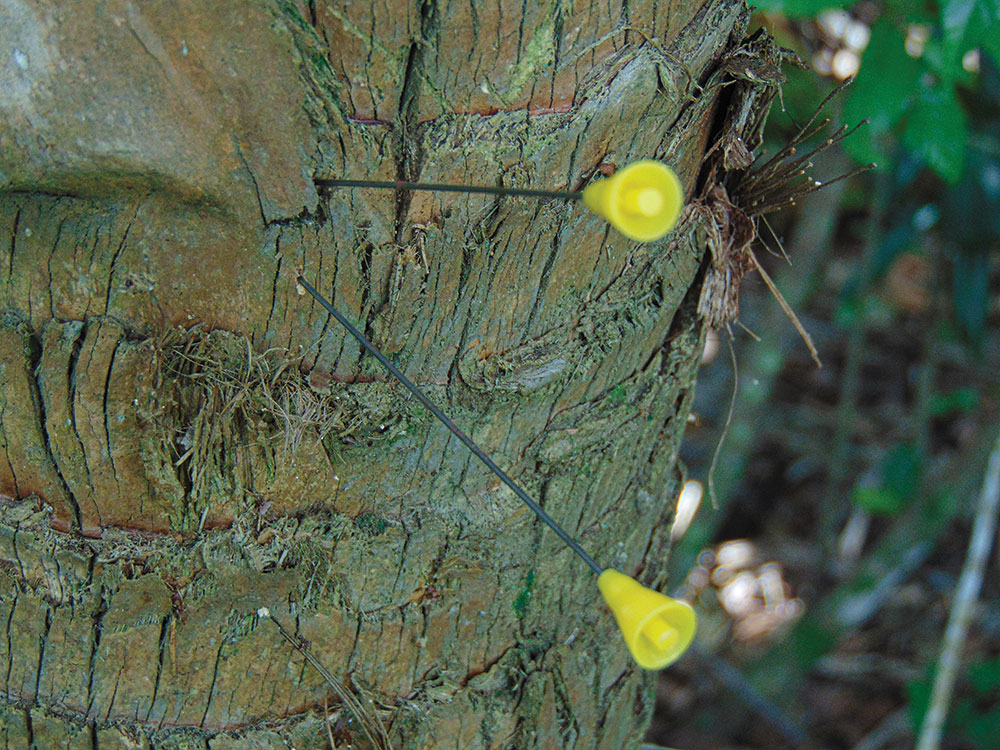
The blowgun, itself, was created from materials such as bamboo, cane or other plant material that grew as a long, hollow stalk. Bamboo was a popular choice for people who lived in areas where it flourished. It grows incredibly quickly and without a lot of care needed. This ensured an almost endless supply of material to equip an entire tribe or village.
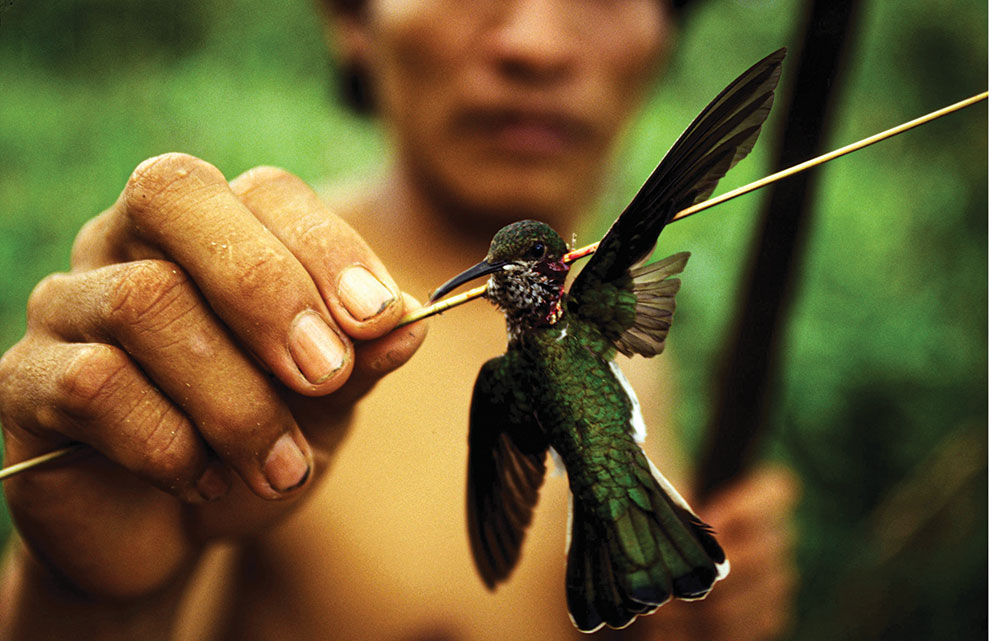
Bamboo has sections (“nodes”) within their stalks that had to be removed to allow the dart or other projectile to move freely through the tube. Villagers would clear these nodes from the bamboo in a variety of ways. Some would cut the stalk in half, grind down the nodes and then “glue” the two pieces back together and lash them for extra security.
Others would drill or bore through one end of the bamboo and remove the nodes that way, while still others would try to find bamboo that was free of nodes within a certain length, say about 3 feet. These node-free lengths weren’t easy to find, compared to traditional bamboo, so the previously mentioned methods here were often the norm.
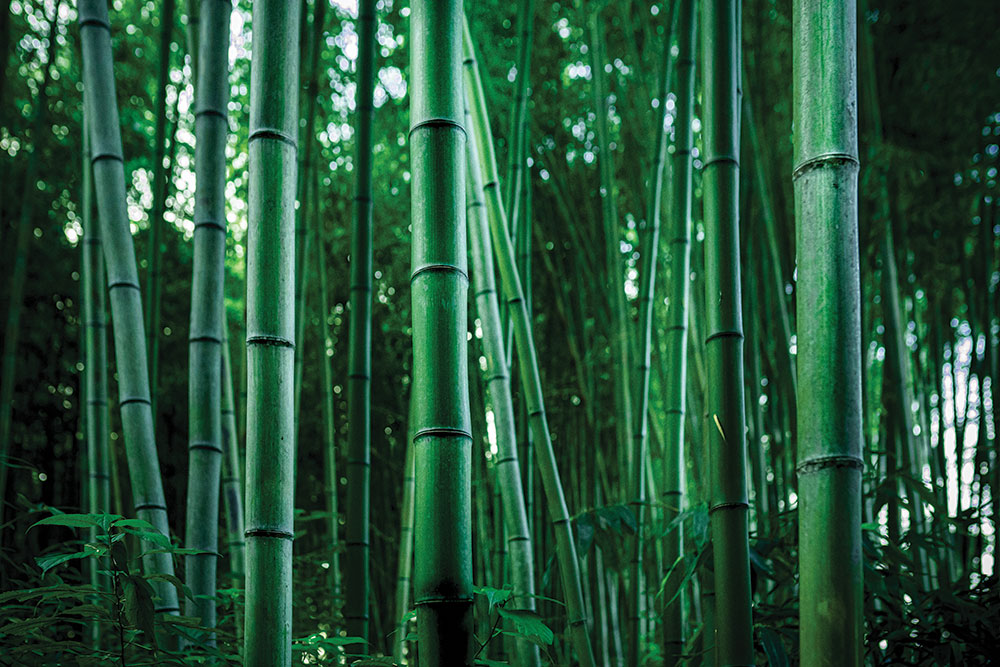
Wood was also used to make blowguns. A long, straight piece was sawed lengthwise into two halves. The inside material was then gouged out, leaving a half-round contour inside. This was repeated for the second piece. Then, both were glued back together and lashed in a process very similar to that used with bamboo. Lashing material included cordage, rattan, paper, leather and cloth. The material used was based upon its relative availability in the surrounding areas.
The blowgun’s projectile was either a dart or a pellet of some type. Primitive blowguns were most likely “loaded” with seeds, nuts or other natural materials, followed by clay pellets and, eventually, wooden darts with fluff ends taken from birds or other fur-covered animals.
MODERN CONSTRUCTION
Today, blowguns are created using aluminum or carbon-reinforced plastic. Darts are made of steel and sharpened to a point so they’ll stick into just about anything. Bamboo darts are also available, as are large, broad-tipped darts used for hunting and stun darts—which don’t kill or even stick into a target. Rather, they stun the intended target, and, hopefully, the impact runs it off your land.
“Because the blowgun was a simple device to create, most blowguns across the globe appear very similar in structure but with the materials used to create them slightly different.”
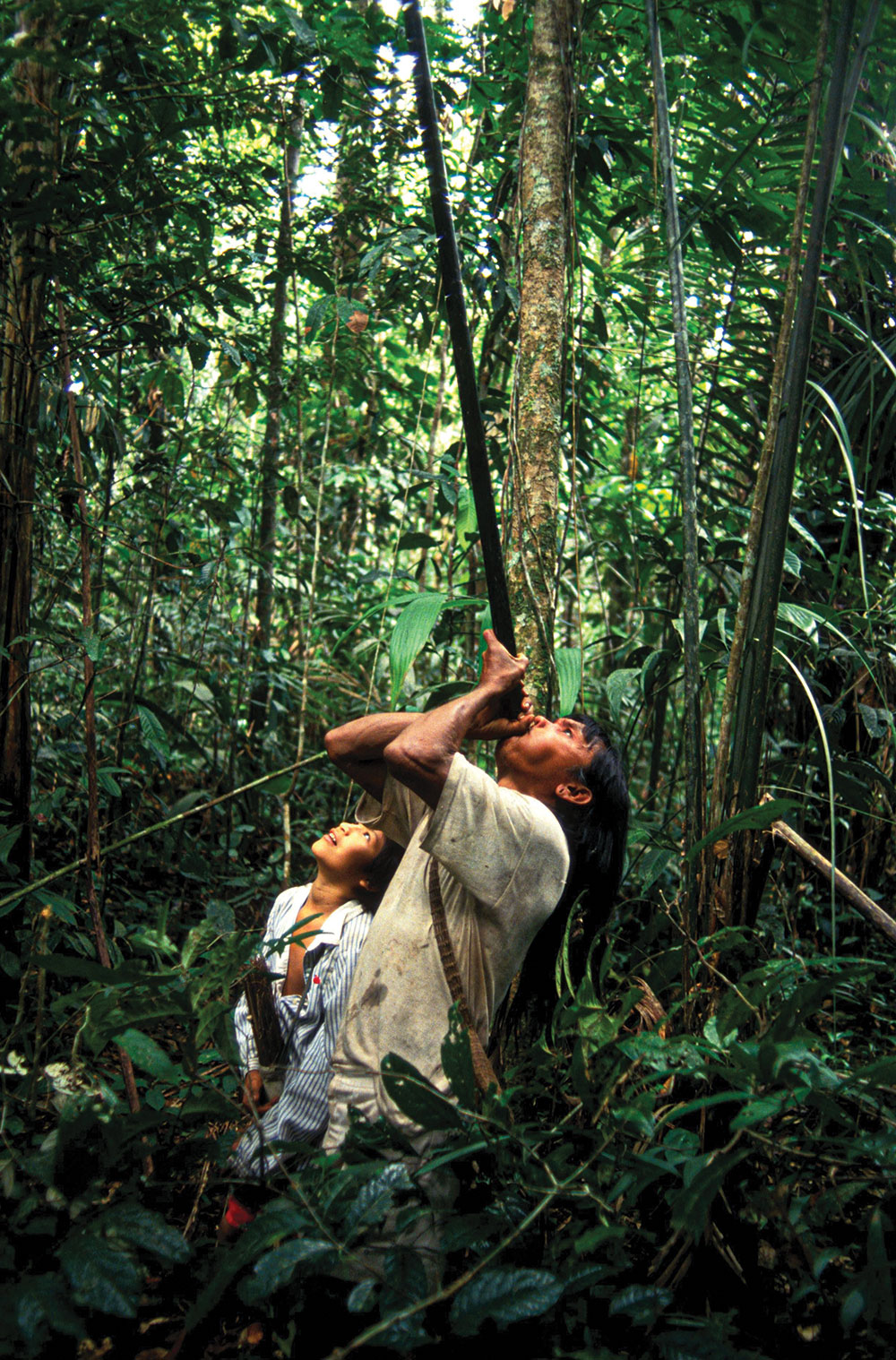
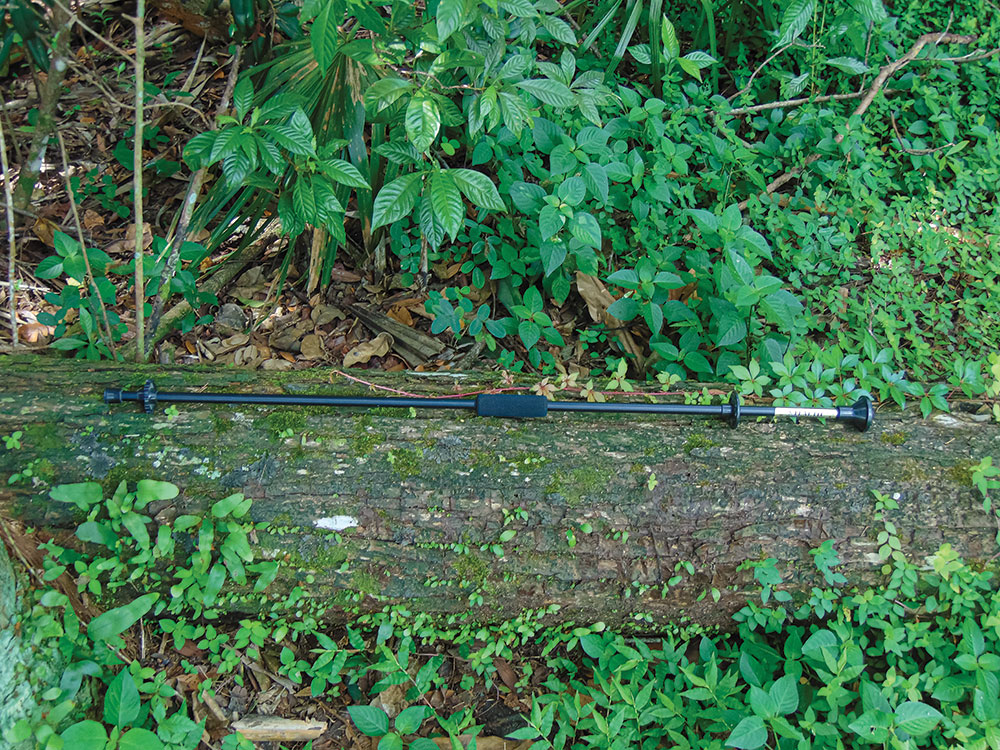
The fletch of the dart is also created from a variety of materials. In primitive times, down, animal fur and feather tips were all used. Today, the fletch is generally composed of either carbon-reinforced plastic or flexible aluminum. The modern fletch is a conically shaped unit that attaches to the back end of the dart and is the recipient of the user’s powerful burst of air, which causes the dart to soar out of the shaft and directly to its intended target.
SPORT COMPETITIONS
There are sport competitions for blowgun practitioners, but they’re quite rare compared to archery or other projectile sports. While there are currently numerous styles practiced around the world, an effort to make a standardized version is underway.
“ … the blowgun, which has been around for thousands of years, is definitely here to stay.”
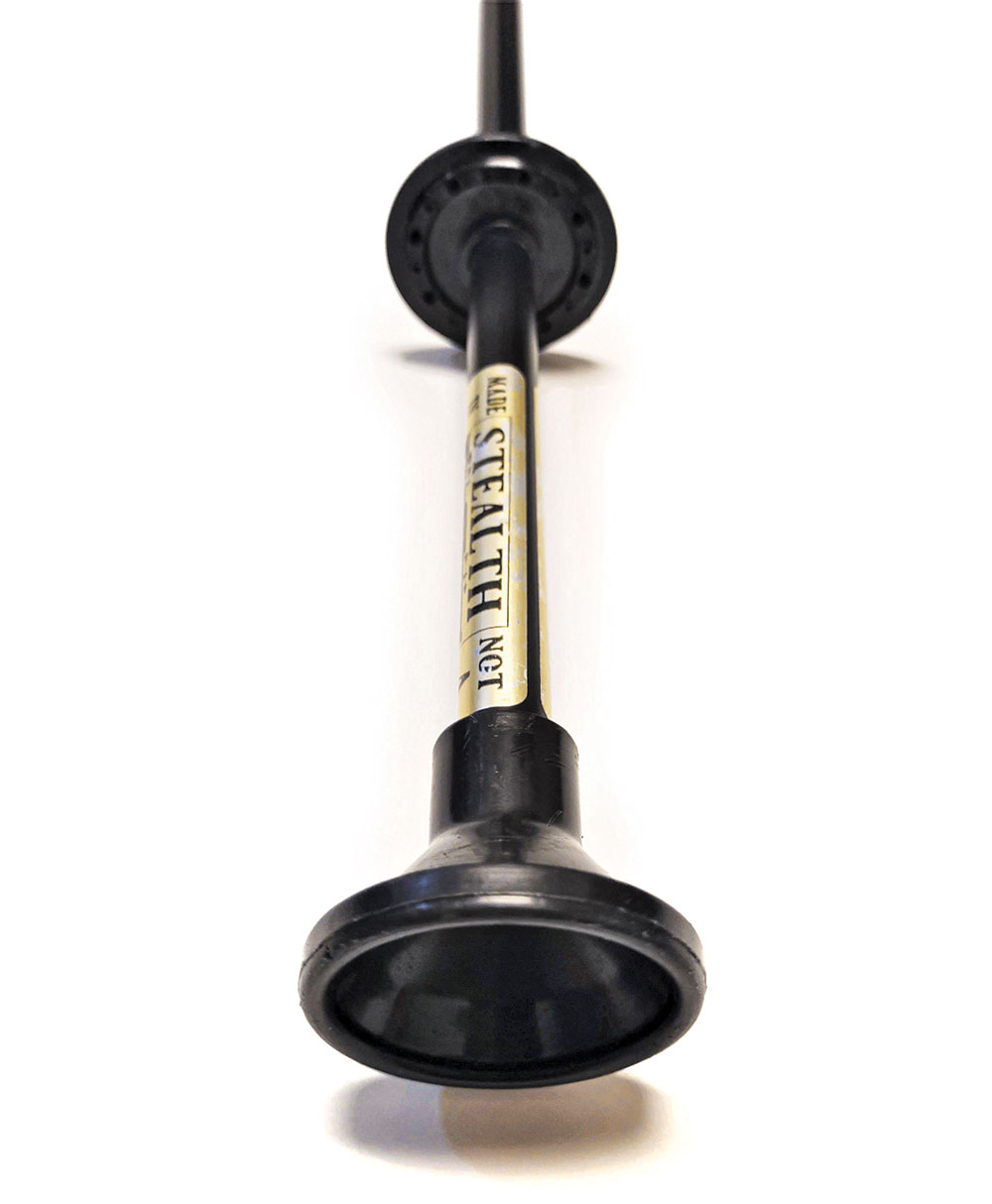
In fact, the International Fukiyado Association has high hopes of making blowgunning an Olympic sport in the future. The association is setting standards for target distance, blowgun length, dart shape and blowgun caliber. It’s also created a program of five darts per round per shooter, with a total of six rounds, equaling 30 total darts per competitor.
Another version is being developed based on the Cherokee Annual Gathering Blowgun Competition. The goal is for this version to also be included in the Olympics. This second version would consist of both a running and shooting portion, similar to the current Winter Biathlon.
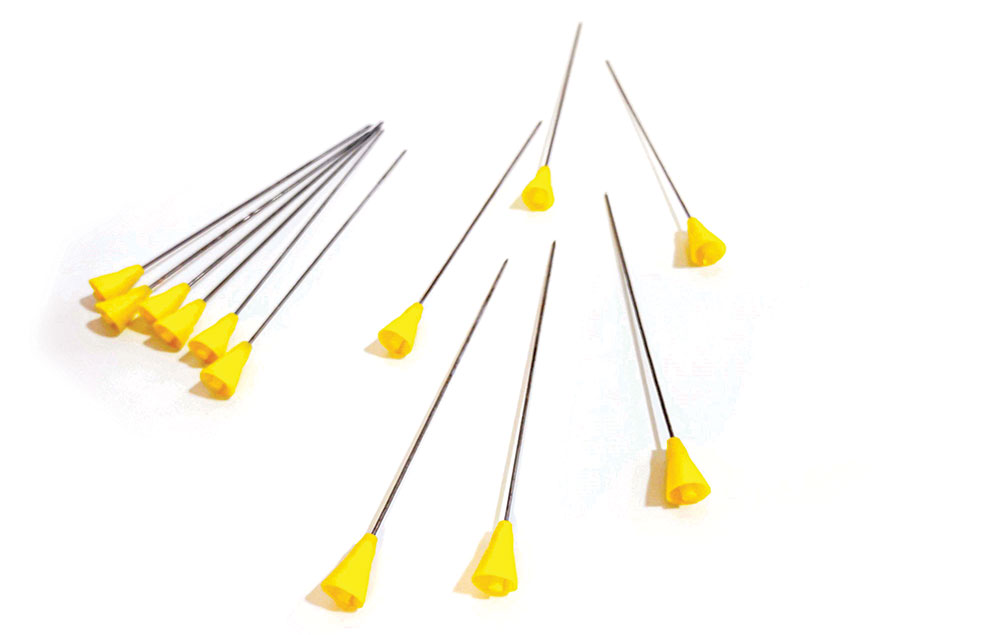
The course would vary in length between 400 and 800 meters, with nine to 16 targets set up throughout the length of the course. The shooter would take their shot, run to the target, remove their dart and run to the next station. Each shooter would be allowed to shoot three darts, one of which must stick into the target in order for the shooter to move on.
The International Fukiyado Association manages the blowgun competitions throughout the world, but several countries, including France, Germany, the Philippines and the Unites States, are included affiliates.
ON THE HUNT
It might seem obvious, but a blowgun won’t kill most animals, especially ones that are being hunted for food to feed an entire family. A blowgun dart or pellet can dispatch small animals, such as lizards, mice and small birds, but that’s about it. From that point, an additive is needed … and that additive is poison.

From very early on, blowgun users would dip the tips of their darts into various poisons to kill their intended targets. They’d also notch their darts so any movement or contact with thick vegetation, bushes or trees would make the dart snap in half, leaving the poison-drenched end inside the unlucky victim. It would take just minutes for the poison to act. Soon after, the animal would be dead.
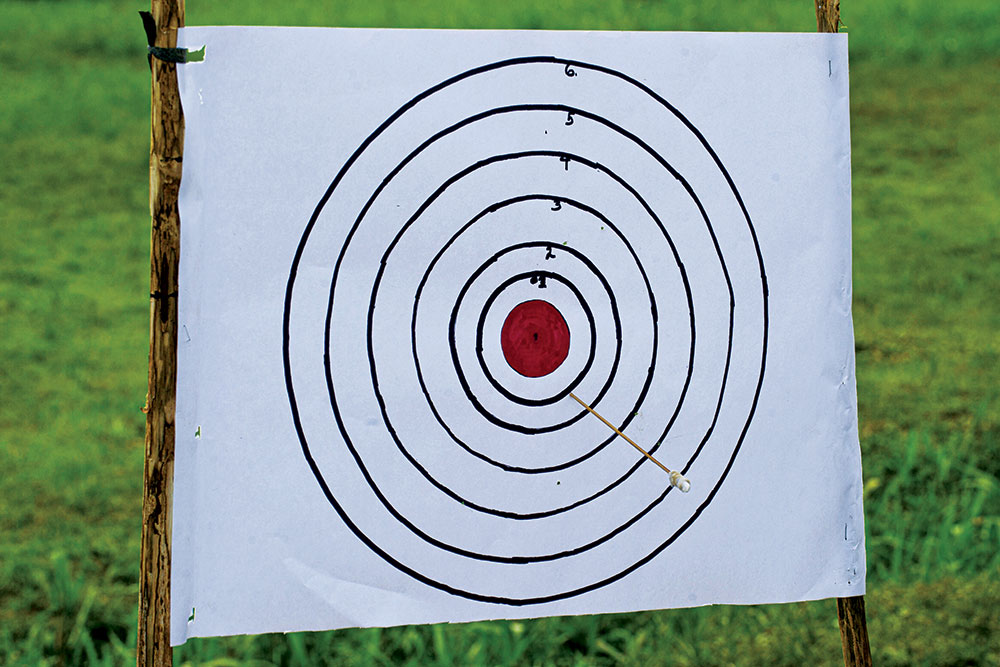
The most common poison used in the Old World was created from the sap of the upas tree. This poison kills by affecting the victim’s heart and bloodstream. Lianas is another such poison, while curare, found in South America, kills using a paralytic action.
“From very early on, blowgun users would dip the tips of their darts into various poisons to kill their intended targets.”
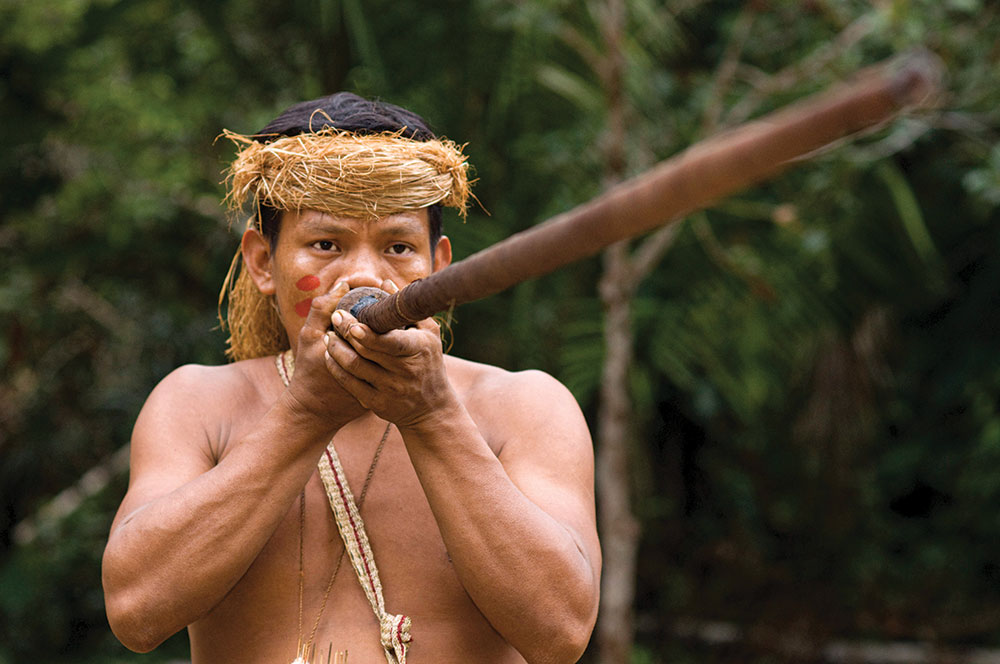
Sap and other plant-based poisons aside, animals also provided blowgun wielders with deadly toxins for a hunter’s targeted prey. Venom extracted from snakes and poisons extracted from insects (such as beetle larvae) and, of course, the famous poisonous dart frog native to Central and South America have all been used to saturate the tip of a blowgun’s dart to take down large prey, such as monkeys, large birds and ground-dwelling mammals.
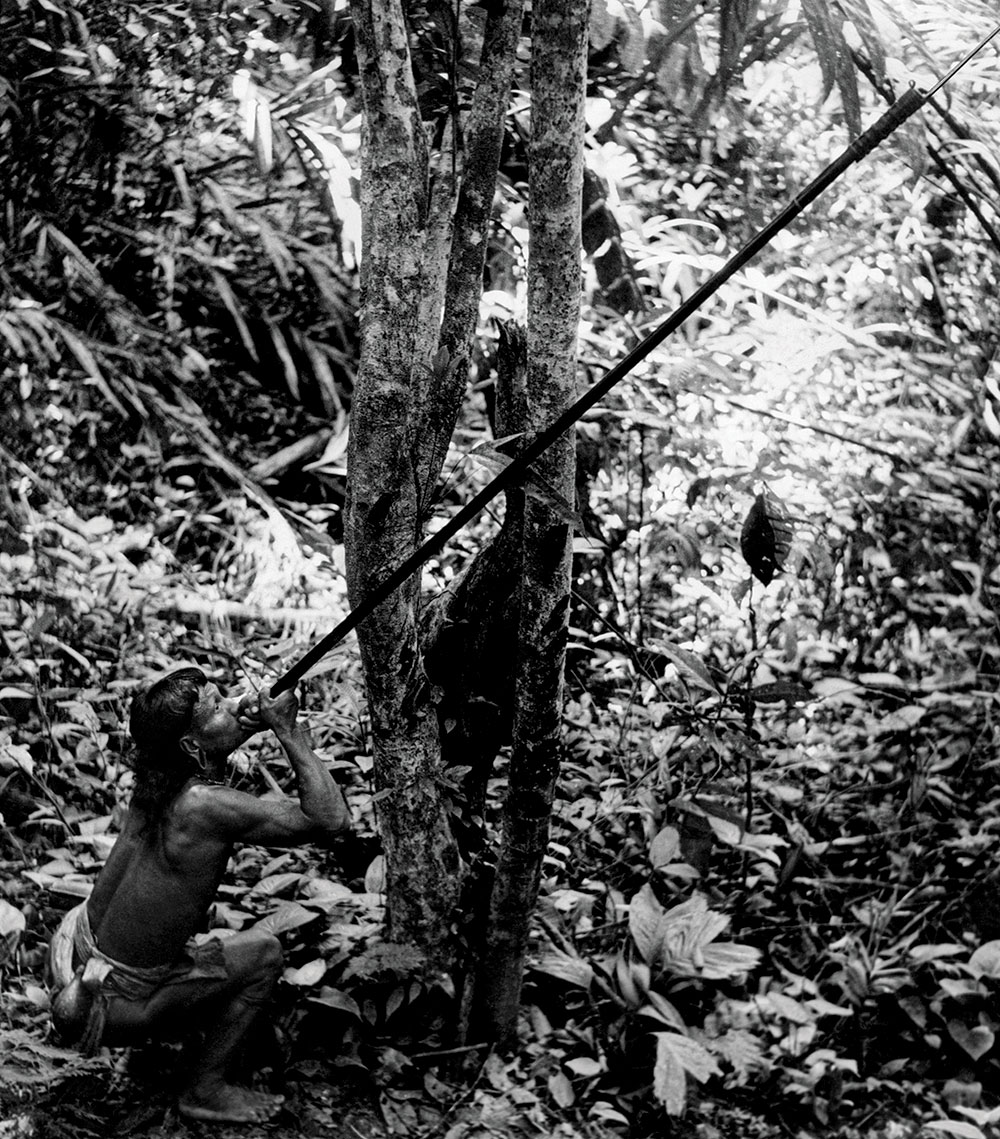
It should be noted that blowgun length, materials used for its construction and the skill of the user all contribute to the success of a hunt. Many tribesmen use very long blowguns—some more than 10 feet in length. This gives them better accuracy for longer shots upward into the trees.
“Using this often-overlooked ancient weapon is a great way to walk in the footsteps of tribesmen, hunters and Native Americans of the past.”
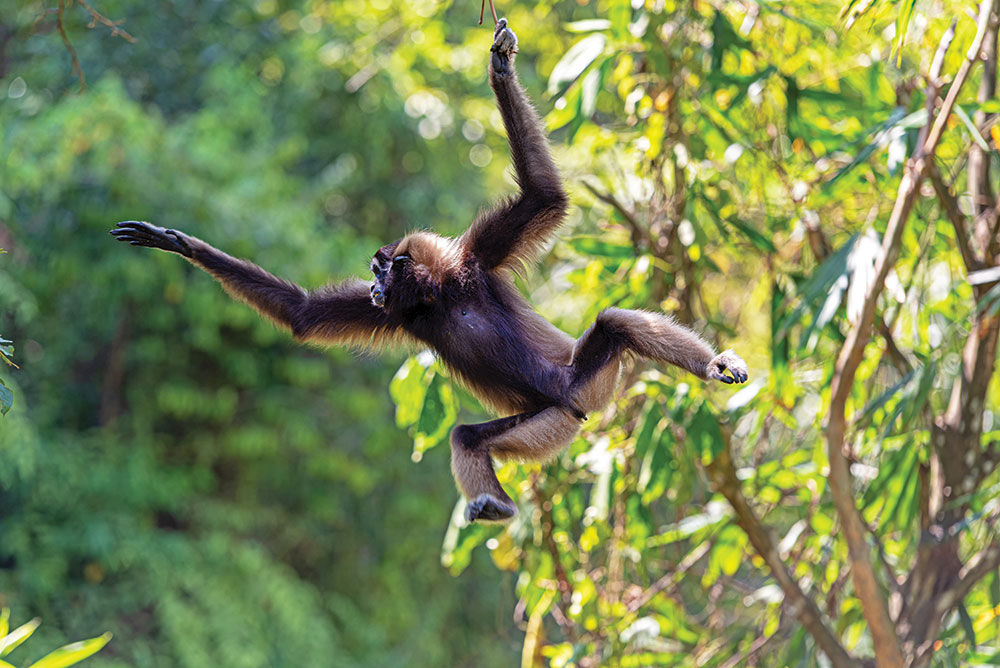
For today’s hunter, there’s a balancing act between a longer blowgun for greater accuracy and a shorter one for easy carrying into dense forest and woodlands. Most prefer a blowgun of about 3 feet that can provide both accuracy and ease of carry.
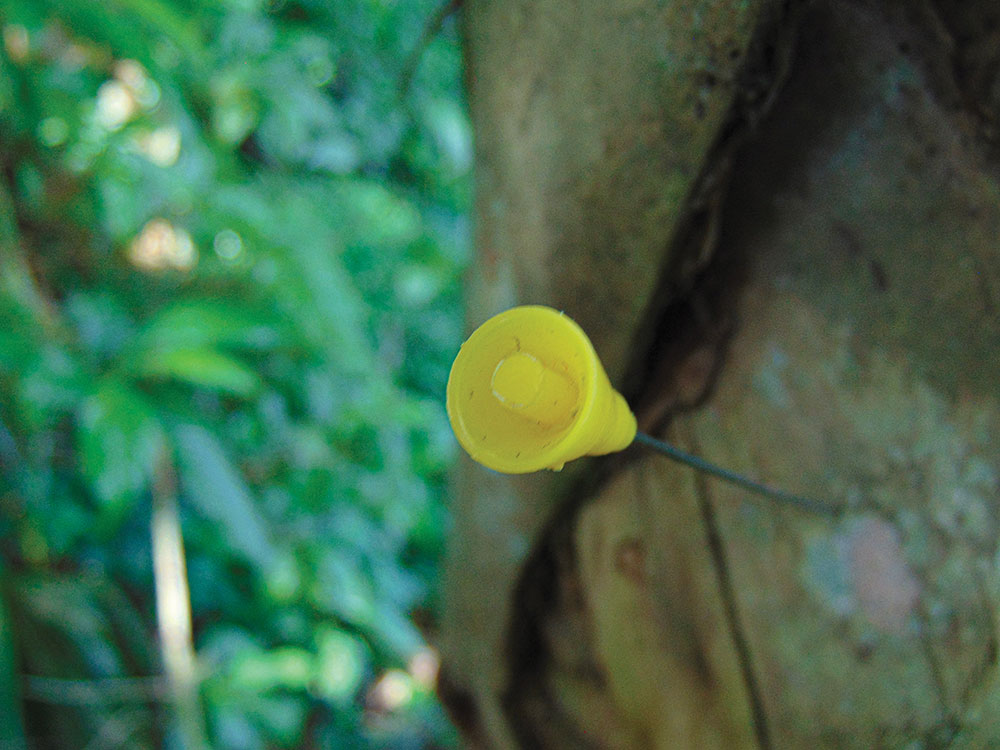
It should be noted that prior to heading out and hunting with a blowgun, you should research the local, state and federal laws of your area pertaining to the game you intend to hunt. Many states and counties have specific laws concerning hunting with a blowgun, so some basic homework beforehand will save you any unnecessary trouble in the future.
READY-MADE OR DIY?
There are two options when deciding on a blowgun: You can either buy one rather quickly in a store or online, or you can go traditional and attempt to create one from natural materials. The one you choose will depend upon the time you’re willing to devote to it, your interest in creating things using your hands and accessibility of any needed materials.
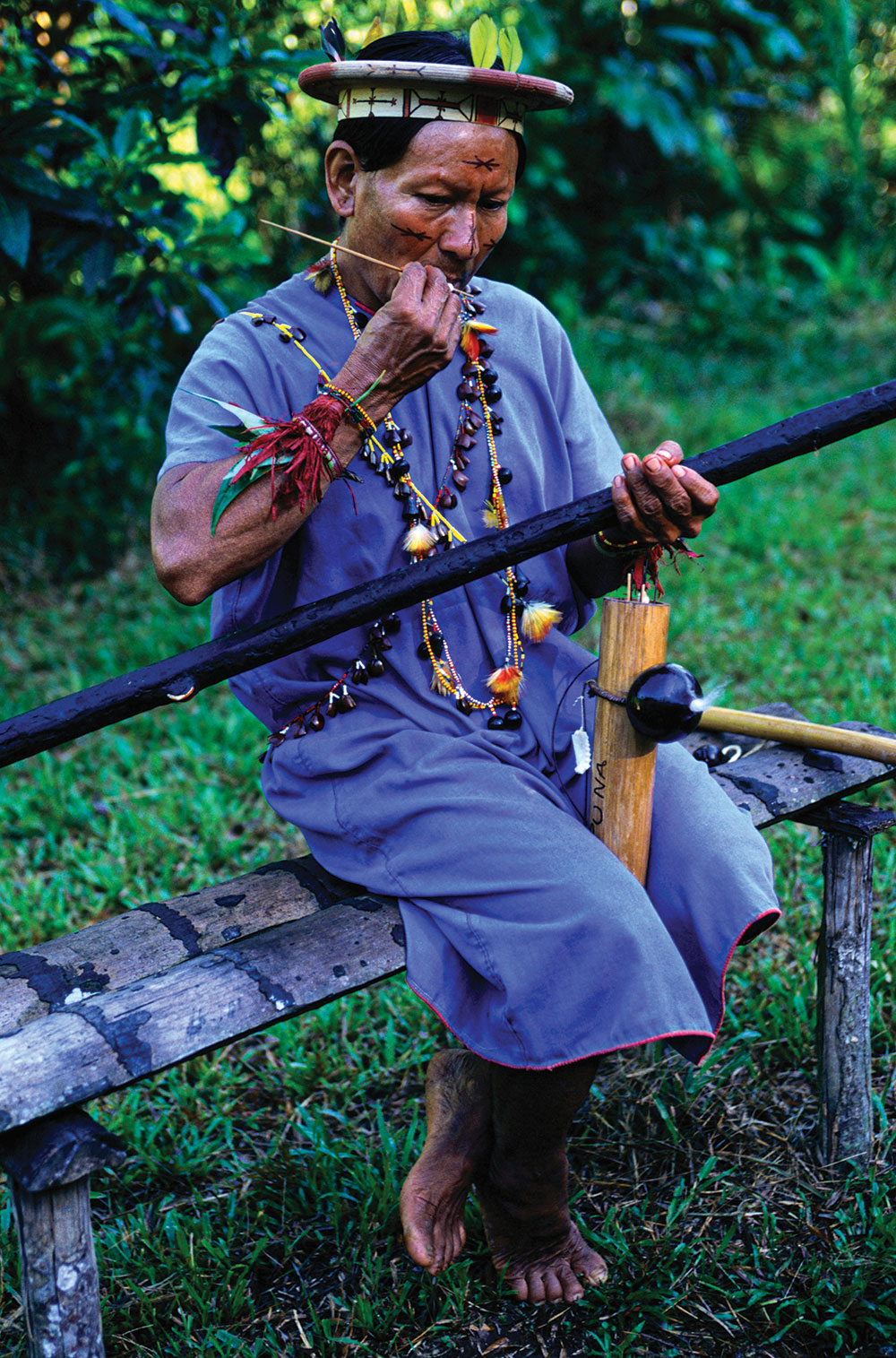
The hunt in the wild for natural items to create a blowgun is what drives some people to take this path. Searching for natural bamboo or cane, along with creating the darts from wood and natural fletch, allow for personalization, as well as a feeling of accomplishment.
However, if you live in a city environment and/or are living a hectic life, perhaps a pre-made, store-bought option is best. You’ll have it quickly; you can choose the length you desire; and you’ll be able to easily purchase darts, pellets and other ammo.
FOR THE FUN OF IT
It doesn’t matter whether you buy a blowgun or build one, use pellets or darts, compete, hunt or just engage in target practice. Using this often-overlooked ancient weapon is a great way to walk in the footsteps of tribesmen, hunters and Native Americans of the past.
Have fun when you use it, improve your accuracy, and spread the word that the blowgun, which has been around for thousands of years, is definitely here to stay.
IS THE POISON DART FROG OVERRATED?
Yes, the words, “poison dart,” actually comprise the common name of this frog; and yes, its toxins can kill a variety of game—as well as humans.
But is it as dangerous as many people think, or is it highly exaggerated?
Well, it’s both. It depends on what point of view you take. A poison dart frog is—without question—deadly. For instance, the golden poison frog can have within its body enough poison to kill up to 10 grown men.
All it takes is a slight coating on an arrow or a dart, and your prey, if impaled, will certainly die.
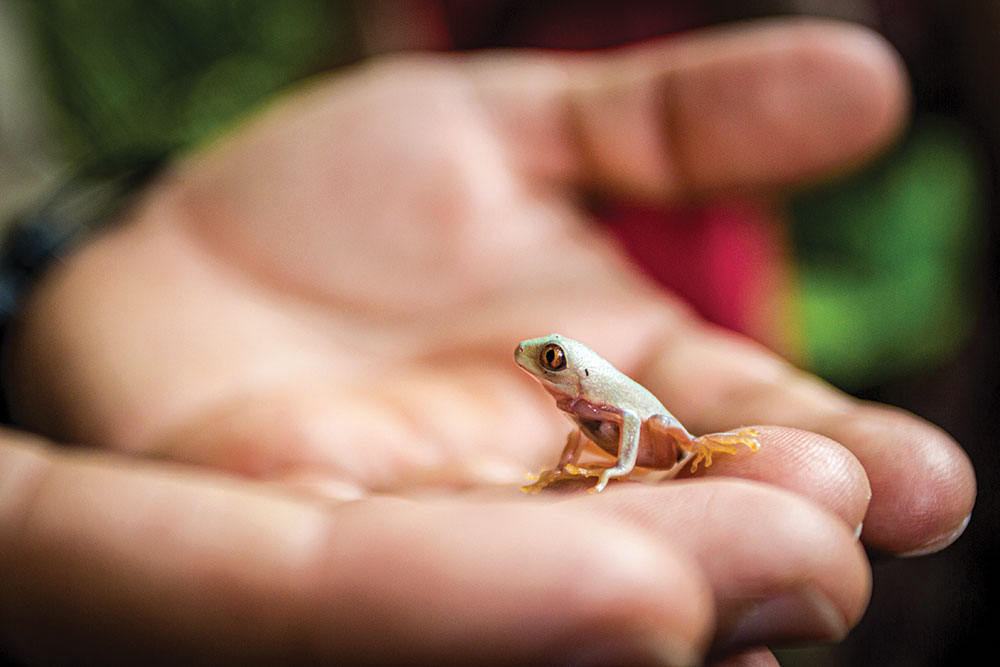
However, of the more than 170 species of dart frog, only four have been used for their deadly toxins. The reason some species are highly toxic while others are not is due mainly to their diets. Frogs that eat mainly ants, mites and termites tend to be highly toxic, while those that enjoy a variety of prey are far less toxic and far less dangerous to man.
The bright colors on the skin of highly toxic frogs are warnings to others to stay away. For those who heed this warning, life is good. For those too hungry to obey, these scrumptious-looking frogs will, indeed, be the last meal they ever eat.
JUST THE FACTS
Although blowguns are simple in design and operation, they boast some very interesting facts and stats:
Longer is better.
When it comes to blowguns, size does matter … but more specifically, its length. The longer the tubing, the more accuracy potential there is. Even with a tiny amount of air from your lungs, a dart will soar from a 6- to 8-foot blowgun and hit a target that’s as far away as 40 feet (or more).
They’ve stayed around for a reason.
Blowguns are the most primitive air weapons of all time, dating back 2,000 years or more, so you might think they’d have been replaced and be virtually extinct by now. Nevertheless, they’re still in use by tribes throughout the world; and, for nonhunting purposes, blowguns have now become a competitive sport.
They’re incredibly accurate.
Don’t be fooled by a blowgun’s simplicity. Blowguns are incredibly accurate—so much so that hitting a 3-inch target from 40 feet away isn’t impossible or unobtainable, even for novices. Pros in the use of the weapon— that is, the natives of South and Central America—can shoot up to 100 yards and bag their game.
A version of this article first appeared in the January 2022 issue of American Outdoor Guide Boundless.

